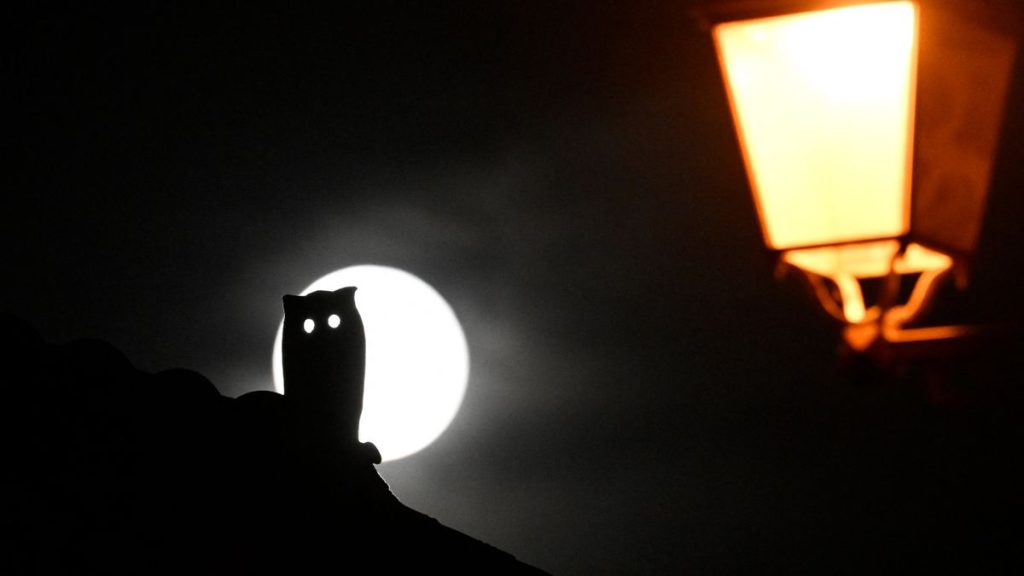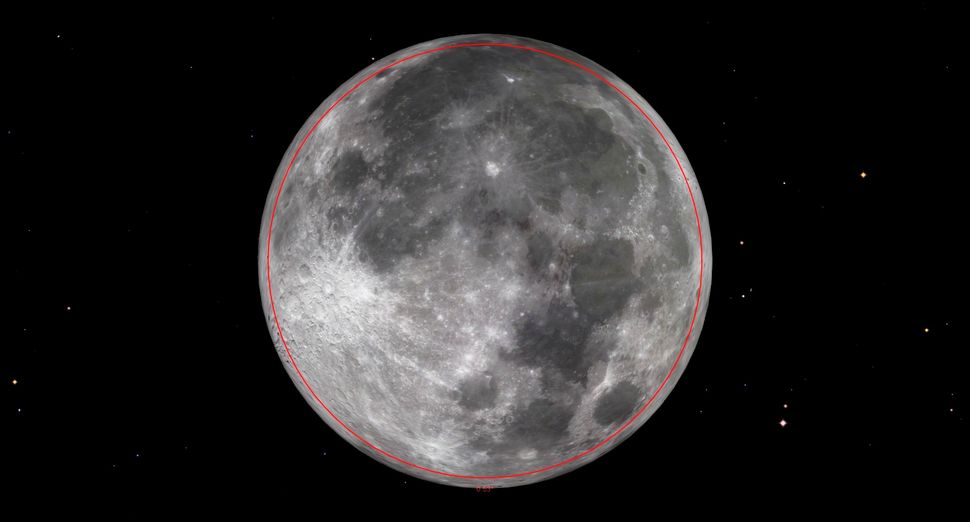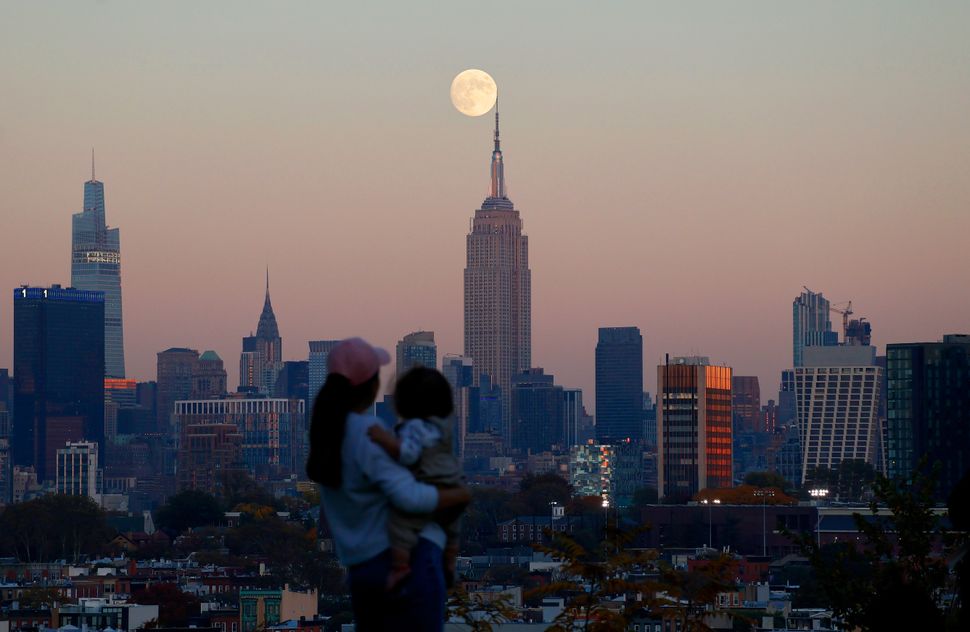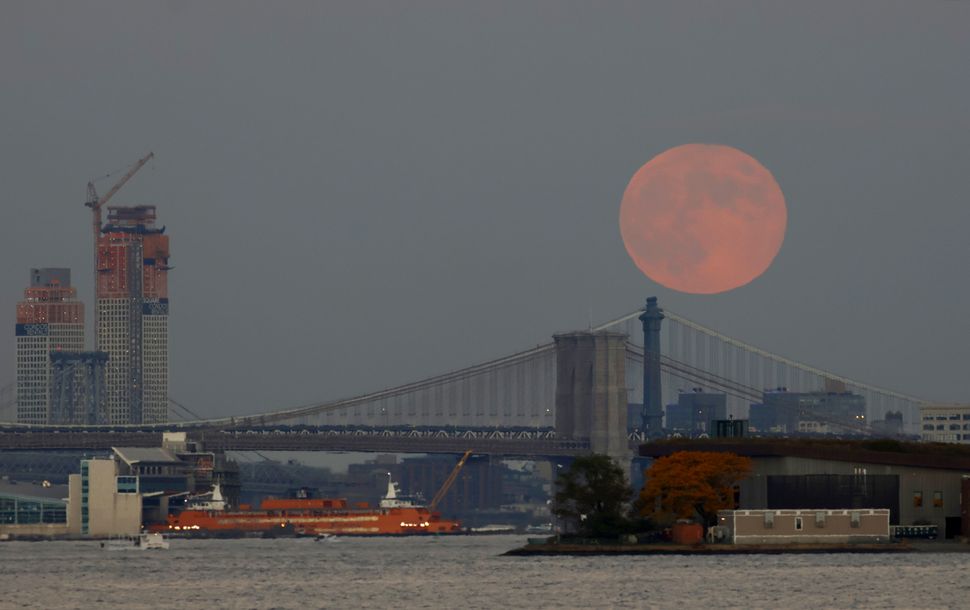
Hunter’s Supermoon rises this week, the biggest full moon of 2024. Here’s how to see it (Image Credit: Space.com)
The largest full moon of 2024 rises this week.
On Thursday (Oct. 17) at 7:26 a.m. EDT (1126 GMT), the moon will officially turn full. And less than 11 hours earlier, at 8:48 p.m. EDT on Wednesday evening (0048 GMT on Oct. 17), the moon will also arrive at perigee, its closest point to Earth, at a distance of 221,938 miles (357,174 km) away.
The result of these two occurrences will be a 14% brighter-than-average full moon accompanied by unusually high and low tides later this week into the start of the weekend. Colloquially, a full moon that coincides with perigee is referred to as a “supermoon.”
Dr. Fred Espenak, a retired NASA astrophysicist and eclipse expert, defines a supermoon as a full moon that occurs when the moon is within 90 percent of its closest approach to Earth. Dr. Espenak has compiled a list of all the supermoons (including those that fall under the 90 percent category) occurring during the 21st century.
According to Dr. Espenak, there are four supermoons in 2024, in August, September, October and November. But this week’s supermoon is the one where the full moon and perigee coincide closest together.

In contrast, on April 13, 2025, the full moon will closely coincide with apogee, the moon’s farthest point from Earth. On that date, the moon will be about 31,000 miles (50,000 km) farther away and will appear 14 percent smaller compared to on the evening of Oct. 16, thus the antonym to a supermoon is a “micro moon.”
Native Americans used to attach a moniker to each month’s full moon and traditionally the October full moon was known as the Hunter’s Moon. With the leaves falling and the deer fattened, this is the time to hunt. Since the fields have been recently reaped, hunters can ride over the stubble, and can more easily see foxes and other animals that have come out to feed and be caught for a Thanksgiving banquet after the harvest.
Thursday or Wednesday?
On Thursday, many television weathercasters will probably urge their viewers to step outside that night to enjoy the sight of a “Full supermoon.” But in reality, on that night, the moon will already be many hours past full (hence, actually a waning gibbous phase) and even farther away in time from the perigee point in its orbit.
But on Wednesday night, not only will the moon be very near to, or at perigee, but it will also be getting progressively closer each hour to the time when it actually turns full. So, if you wish to get the full “supermoon effect,” then Wednesday is your night.
In actuality, however, while a full moon theoretically lasts just a moment, that moment is imperceptible to ordinary observation, and for a day or so before and after most will speak of seeing the nearly full moon as “full:” the shaded strip is so narrow, and changing in apparent width so slowly, that it is hard for the naked eye to tell whether it’s present or which side it is.

High water moments
Every month, “spring” tides occur when the moon is full and new, the word spring being derived from the German springen — to “spring up,” and is not — as is often mistaken — a reference to the spring season. At these times the moon and sun form a line with the earth, so their tidal effects add together. The sun exerts a little less than half the tidal force of the moon.
“Neap” tides, on the other hand, occur at those times when the moon is at first and last quarter and works at cross-purposes with the sun. At these times tides are weak.
The highest tides will not, however, coincide with the perigee moon but will actually lag by up to several days depending on the specific coastal location.
For example, at Boston Harbor a peak tide height of 12.0-feet comes at 12:11 p.m. EDT on Friday, almost 2 days after perigee, while at Cape Fear, North Carolina, the highest tide (6.8-feet) will be attained at 9:16 a.m. EDT on Saturday.
Any coastal storm at sea around this time will almost certainly aggravate coastal flooding problems.
Tidal force varies as the inverse cube of an object’s distance. This month the moon is 12.2% closer at perigee than at apogee. Therefore, it will exert 42% more tidal force at this full moon compared to the spring tides for the “micro” full moon that will coincide with apogee next April.
Huge moon at moonrise and moonset
Usually, the variation of the moon’s distance is not readily apparent to observers viewing the moon directly.
Or is it?
When the perigee moon lies close to the horizon it can appear absolutely enormous. That is when the famous “moon illusion” combines with reality to produce a truly stunning view. For reasons not fully understood by astronomers or psychologists, a low-hanging moon looks incredibly large when hovering near to trees, buildings and other foreground objects. The fact that the moon will be much closer than usual this weekend will only serve to amplify this strange effect.

So … a perigee moon, either rising in the east at sunset or dropping down in the west at sunrise might seem to make the moon appear so close that it almost appears that you could touch it. You can check out this out for yourself by first noting the times for moonrise and moonset for your area thanks to the U.S. Naval Observatory.
If you’re looking to get a closer view of the moon and other night sky objects, our best telescopes for beginners guide can help you find what you need. And if something more portable is your preference, check our our best binoculars guide.
Editor’s note: If you take a stunning photo of the Full Hunter’s Supermoon and want to share it with Space.com, send images and comments to our skywatching inbox at spacephotos@space.com.
Joe Rao serves as an instructor and guest lecturer at New York’s Hayden Planetarium. He writes about astronomy for Natural History magazine, the Farmers’ Almanac and other publications.





